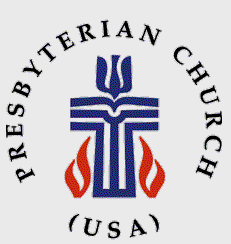
First Presbyterian Church
Las Cruces, NM
|
First Presbyterian Church |
Pipe Organs in the First Presbyterian Church
Las Cruces, New Mexico
Kennett Melgaard
In 1925, the congregation of the First Presbyterian Church, Las Cruces, New Mexico purchased a parcel of land at the intersection of Las Cruces Avenue and Raymond Street, and set out to build a new church on the site. A man who lived across the street from the land, who was not a member of the congregation, was enthusiastic about the prospect of having a good neighbor. He expressed his delight to the Session of First Church by saying he would purchase a pipe organ and have it installed in the new church.
He had read that the Roxy Theatre in New York City was offering its pipe organ for sale. Immediately he made contact with the management of the theatre and succeeded in buying the instrument.He had it crated and shipped by ocean freighter from New York City to New Orleans. Enroute, the freighter ran into violent storm. The crates were tossed about in the hold of the vessel, the crates burst open, and parts of the organ were scattered about and badly damaged. The vessel continued its course and docked in New Orleans. Pieces of the organ were gathered, recrated, placed on freight cars and shipped to Las Cruces.
Men in the congregation set about reconstructing the organ. They were successful. It was maintained through its years of service by laymen. Mr. Roy France, an auto mechanic, was the chief artisan. He could be seen on a Saturday afternoon sitting on a pew, cutting shoe leather, then fitting a piece into a crack.
In the early 196O's the congregation purchased a 6 acre plot of land on Boutz Road. An architect was selected to draw up plans for a new church on the site. The question arose over the matter of moving the organ to the new church or purchasing a new instrument. As fund raising began, it became apparent there would not be enough money in the immediate future to pay for a new instrument. The Building Committee realized that the old organ would not be able to provide enough sound to fill the new, larger sanctuary.
Mr. Chester Linscheid, a member of the Building Committee, was assigned the task of finding a solution. After a long search, he found a sympathetic ear in Mr. Smith A. Gauntt, an organ builder in Denver, Colorado. Mr. Gauntt had in his shop a large supply of used wind chests, pipes, electrical equipment, keyboards and other organ parts which he had salvaged from used organs. Mr. Linsceid asked him to solve the problem.
As construction of the sanctuary was nearing completion in 1964, Mr. Gauntt first moved the organ from the old church to the new one, then proceeded to recondition and rebuild the instrument. He installed 19 ranks of pipes. He used the old three manual keyboard and electrical contacts, but wrapped them in a new console shell. Very little new material was used. Some of the pipes in the restored instrument were taken from theater organs, including that from the Roxy Theater, which employ high wind pressure to drive the sound from organ chambers into the theater. Other pipes came from church organs which operate at a low wind pressure to produce sounds appropriate for worship. Mr. Gauntt nicked the mouth of the pipes from church organs so they could operate on high wind pressure. These pipes then produce a dull rather than a bright sound. The assortment of pipes did not produce good musical sounds.
Mr. Gauntt charged only $8,500 for parts and labor. The congregation could afford that sum.
Maintaining the instrument became a task of increasing difficulty. In January 1975, the Worship Committee recommended to the Session the need for a Organ Committee to deal with the steadily deteriorating pipe organ. The session appointed the committee, authorizing it to spend $500.00 for consultations and other expenses.
Six pipe organ building firms were invited to bid either on restoring the existing instrument or building a new instrument. All firms bid on a new instrument. The bids ranged from $85,025 to $130,000. Three builders of electronic organs made bids.
None of the electronic builders, whose bids were only slightly less than those of the pipe organ builders, would guarantee their instruments beyond 10 years. In contrast the pipe organ builders claimed their instruments would last a minimum of 50 years.
A congregational meeting was called for January 25, 1976. The committee recommended the bid of Robert L. Sipe, Inc., of Dallas, Texas, who offered a two manual tracker instrument with 26 stops and 35 ranks of pipes, for $109,200. The congregation approved the recommendation. Mr. Sipe had several organs under construction in 1976. It was not until the Summer of 1980 that he was able to install the instrument.
The instrument was well worth waiting for, exceeding all expectations. It is a fine musical instrument, producing a wide range of dynamics, musical tones and colors. It serves the congregation well.
Return to home page
Send comments, suggestions, and requests to Alex. F. Burr or send email to aburr @ zianet.com.
Technical assistance and net access provided by zianet.com
.
Last update
2004-04-27 13:37:33